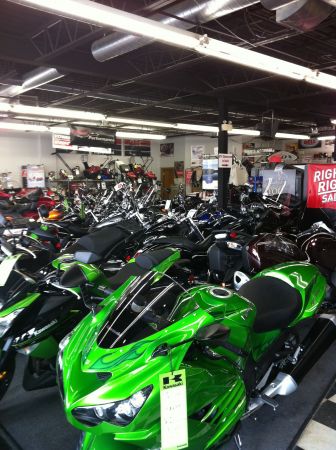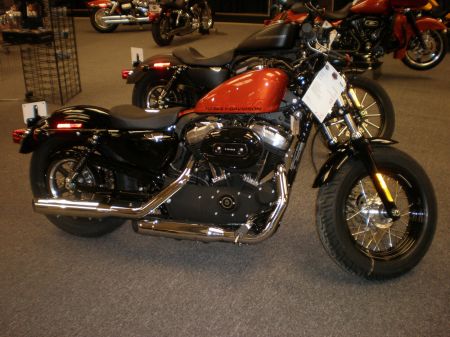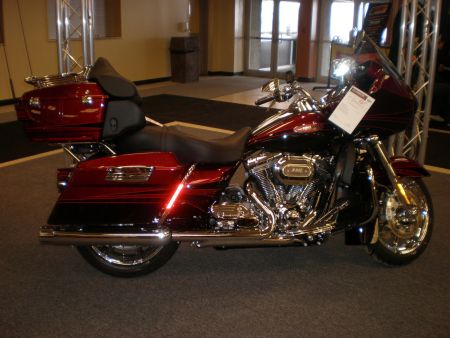 For a lot of readers of this article, the whole process of winterizing their motorcycle is a non-issue because the storage facility such as your local Ontario motorcycle dealership will either do most of the tasks for you or will give you expert advice on what to do and how or where to do it. There is absolutely nothing wrong with that. You are either really enthused about doing the motorcycle maintenance yourself or you’re not. For many riders, there is barely enough time in their schedule to ride the motorcycle, let alone do any maintenance.
For a lot of readers of this article, the whole process of winterizing their motorcycle is a non-issue because the storage facility such as your local Ontario motorcycle dealership will either do most of the tasks for you or will give you expert advice on what to do and how or where to do it. There is absolutely nothing wrong with that. You are either really enthused about doing the motorcycle maintenance yourself or you’re not. For many riders, there is barely enough time in their schedule to ride the motorcycle, let alone do any maintenance.
Needless to say, potential warranty issues and maintenance contracts, etc. can help you decide the extent to which you do your own maintenance. You also need to be realistic about your own technical abilities, or be prepared for the possibility of costly corrections to your labours when a dealer has to fix your mistakes. And above all else, be sure that you have your motorcycle secured against causing injury or damage to people or property during your work. Electricity, chemicals, heat, falling or flying items… all of these hazards need to be guarded against.
Preparing your motorcycle for the winter involves cleaning and drying the bike, and taking care of the battery and all fluids. Remember, the biggest enemy your motorcycle faces over the winter months is moisture. Moisture inside the exhaust pipes can lead to rust; moisture inside the gas tank leads to corrosion as well.
 The first thing to do is to ensure you have gathered all of the tools and materials you will need. Spark plug wrench, cleaning cloths, new engine oil, battery charger (there are some very advanced units out these days that are well worth the investment), WD40, chain lube (if your bike is chain driven, obviously), soap, water, and wax (as far as wax goes, use whatever your dealer or manufacturer recommends). A proper motorcycle cover will be required as well, and it’s a good idea to get plugs for your exhaust pipes, although some people use plastic secured with rubber bands over the ends which can be equally effective in keeping rodents and such things out.
The first thing to do is to ensure you have gathered all of the tools and materials you will need. Spark plug wrench, cleaning cloths, new engine oil, battery charger (there are some very advanced units out these days that are well worth the investment), WD40, chain lube (if your bike is chain driven, obviously), soap, water, and wax (as far as wax goes, use whatever your dealer or manufacturer recommends). A proper motorcycle cover will be required as well, and it’s a good idea to get plugs for your exhaust pipes, although some people use plastic secured with rubber bands over the ends which can be equally effective in keeping rodents and such things out.
Wash and clean your bike as thoroughly as possible, removing insect spots, road detritus, etc. Try not to get water inside the exhaust pipes of course. Wax all painted and chromed surfaces. Clean the chain thoroughly, remove built up residue with WD40, then lube the chain.
Most newer motorcycles will be fuel injected, and that is an enormously welcome advance in technology for those of us who used to spend inordinate amounts of time draining carburetors, dealing with flooding, etc. Some people have a nostalgic attachment to carbureted fuel delivery systems, and that’s just fine. The motorcycle manuals usually help immensely for new owners of older motorcycles… and for that matter, everyone should know their owner’s manual very well for an endless number of reasons over and above maintenance issues.
The oil should be changed at this time as well since all of the condensation and corrosive elements that have built up in the oil over the riding season should be removed.
Your battery needs to be kept charged and possibly removed from the bike for the winter. You want to ensure that it is in a clean, dry, warm place away from heat sources or chemicals. You also want to ensure that the battery terminals are cleaned and maintained.
 There are different requirements for different motorcycles when it comes to some other maintenance issues, but generally speaking you need to ensure that anything requiring lubrication gets it; things like cables and drive shafts, for example. Bikes with liquid cooling systems need to have the quality and level of antifreeze examined and dealt with according to need.
There are different requirements for different motorcycles when it comes to some other maintenance issues, but generally speaking you need to ensure that anything requiring lubrication gets it; things like cables and drive shafts, for example. Bikes with liquid cooling systems need to have the quality and level of antifreeze examined and dealt with according to need.
Another good reason to have your motorcycle dealer do a maintenance check on your bike in the Fall is that things like the level of wear and tear on your brakes, tires, air cleaner, etc. should be carefully assessed for repair or replacement as well. Dealing with repairs and maintenance now will save you time since you’re not dealing with the huge rush of getting bikes out on the road in the spring, and you’re possibly getting some good deals on parts and accessories since dealers can be moving out inventory in anticipation of the slower business period ahead.
Spark plugs should be removed and cleaned or replaced if necessary as well.
Make sure your gas tank is full and add fuel stabilizer. Run the bike long enough to get the stabilizer into the carburetor or fuel injectors.
Don’t forget to clean your helmet, inside and out, with an appropriate cleaner as well, and clean your leathers (as well as leather elements of the motorcycle itself such as the seat) with a quality product that helps to maintain and protect them. All rubber parts on the motorcycle should be treated with a protectant also.
From the moment you purchased your motorcycle you should have started a file for all important paperwork such as safety certificates, receipts, etc. In this file you should also keep dated notes that include anything you need to remember or be aware of for the spring. For example, you might need new tires but your dealer may have said they have a sale in the spring.
Remember, on the dreariest snowiest days of winter, your motorcycle will merely be hibernating. You’ll be prepping for spring riding in no time.








join the conversation